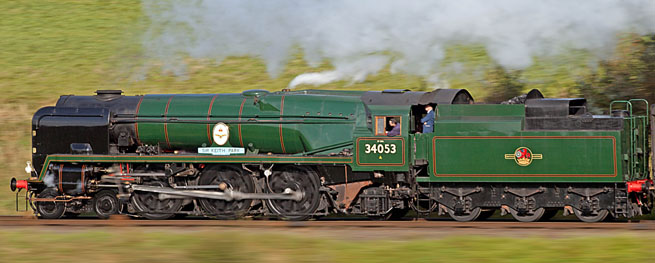Air Vice-Marshal Park
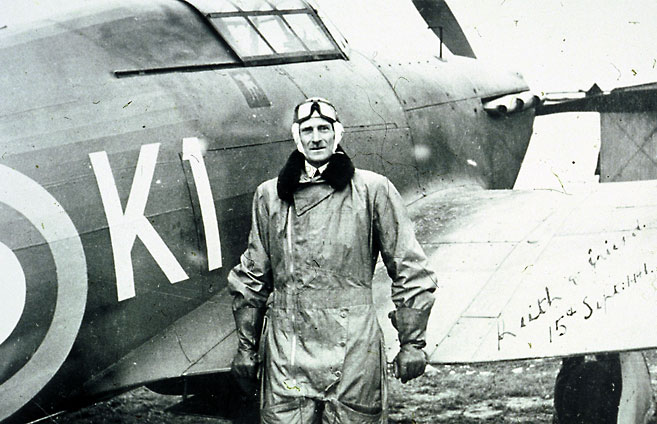
"If ever any one man won the Battle of Britain, he did. I don't believe that it is realised how much that one man, with his leadership, his calm judgment and his skill, did to save not only this country, but the world".
Lord Tedder, Marshal of the RAF
Keith Rodney Park was born in New Zealand in 1892. He served with the ANZAC forces in the Gallipoli campaign in 1915-6 and subsequently joined the Royal Flying Corps where he served as with distinction as a pilot on the western front.
He continued his career with the Royal Air Force and commanded RAF stations before becoming a staff officer to Lord Dowding in 1938. In 1940 he became Air Vice-Marshal responsible for 11 Group. This comprised the fighter squadrons covering most of London, Sussex and Kent, which became the front line when the Battle of Britain broke out in August 1940.
In later years his role as the direct commander of the front line defence has been regarded as crucial to the successful outcome of the battle, though at the time there were acrimonious disputes which led to his replacement in November 1940. He left the RAF in 1946 and returned to Auckland, New Zealand until his death in 1975.
The Sir Keith Park Memorial Campaign
The more recent recognition of his contribution was sparked by a 2007 article in the Mrs Moneypenny column of the FT, which led to a response by Terry Smith, Chief Executive of Tullett Prebon plc. There's also a 2010 updated version of that FT article.
The campaign he led to use the fourth plinth in Trafalgar Square for his statue became a reality, although temporarily, on 4th November 2009. A permanent bronze statue on a plinth was installed in Waterloo Place, near New Zealand House, in September 2011 on the 70th anniversary of the Battle of Britain.
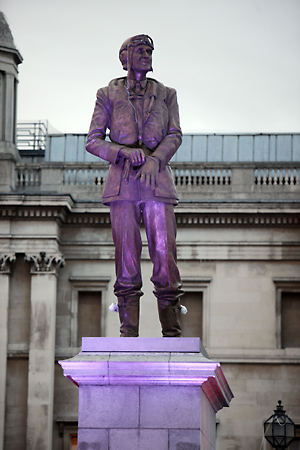 |
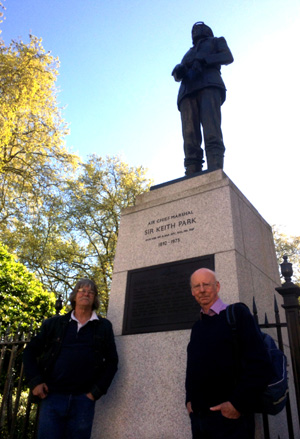 |
|
The temporary statue on the fourth plinth in Trafalger Square. Photo:(c) The Sir Keith Park Memorial Campaign | The permanent statue in Waterloo Place, outside the New Zealand High Commission, with Bob Bevis and Tom Rayner from SLL. |
More information can be obtained at the Memorial Campaign's website.
A 2009 article in the Daily Telegraph by Tony Benn and Lord Tebbit (a most unlikely pairing) in support of Sir Keith Park.
A November 2009 BBC Radio 4 broadcast, 'A letter from Clive James', in which the "kid from Kogarah" recounts the effort to raise a memorial for Sir Keith Park, and dissects a journalist who wrote that a statue was not needed as she had never heard of him. You'll need to download this podcast in order to play it:
http://downloads.bbc.co.uk/podcasts/radio4/povcj/povcj_20091113-2050a.mp3
Sir Keith Park speaking speaking about the Battle of Britain on the BBC on 1st January 1961.
SLL's collection of photos of Sir Keith Park
From Winston Churchill's memoires
Describing his visit to the Uxbridge control centre on Sunday 15th September 1940, the highpoint of the Battle of Britain. After a long silence:
Churchill: "There appear to be many (German) aircraft coming in."
Park: "There'll be someone there to meet them."
How cool is that?
Further Information
Much has been written about the Battle of Britain and Park's contribution to its outcome:
Wikipedia entry: Sir Keith Park
Aerial sequence from 1969 film Battle of Britain with music by Sir William Walton.
Walton's music from the film was played at the 2009 BBC Proms.
Bibliography
Park: The Biography of Air Chief Marshall Sir Keith Park, GCB, KBE, MC, DFC, DCL by Vincent Orange ISBN 1-902-304-616
Sir Keith's Locomotive
Many British locos were named after people, past and present, real and fictional, but rarely is there a direct link between the person and the loco. 34053 is one of those exceptions; the loco was named by Air Vice-Marshal Park at Brighton station on 19th September 1947.
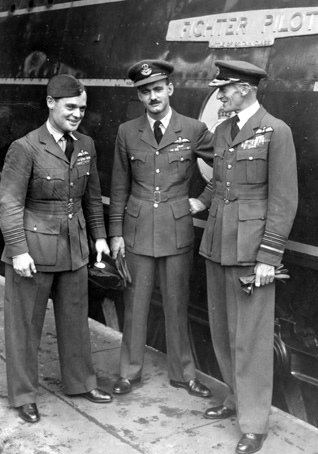 |
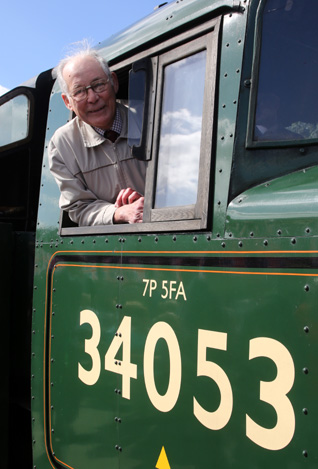 |
|
Three Battle of Britain class locos were formally named at Brighton on 19th September 1947. Standing by 21C155 "Fighter Pilot" are Group Captain Douglas Bader, Wing Commander W G Clouston and Sir Keith Park. | Gerald Storer was a boy of 14 when he skipped school to witness the naming ceremony in Brighton. 66 years later he came to the recommissioning event in Kidderminster to see the loco in service again. Photo: Bob Sweet |
The restoration of 34053 has brought Sir Keith Park to the attention to a wider section of the public in Britain, maybe more than a statue or any other static monument could hope to achieve.
47 years after it was withdrawn from BR service 34053 Sir Keith Park is seen running on the Severn Valley Railway. It's a superb piece of engineering, and a worthy memorial to a great man. The restoration cost £773,000, and a shot like this is worth every penny. Photo (c) Robert Falconer

